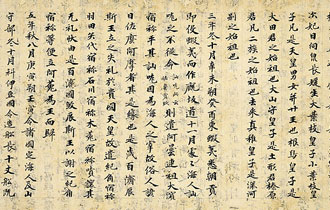reverse course
Nickname given to the second stage of the post-war occupation of Japan, during which time some of the intial aims of the occupation were reversed. With the rise in the late 1940s of the Cold War (the struggle between the United States and its allies and the USSR and its allies), the American desire to reform Japan was overtaken by a desire to turn the country into a strong ally. The resulting change in occupation policy is often called the reverse course. In 1947 and 1948 the U.S. government in Washington decided to actively promote the recovery of Japan’s devastated economy. The American occupation reversed its policy of breaking up big business concerns, and it encouraged the Japanese government to adopt anti-inflation policies and stabilize business conditions through fiscal austerity. Conservative political leaders like Yoshida Shigeru, who hoped to restore Japan’s position in the world as an economic power, welcomed the change in direction. With assistance from the United States, the Japanese government also began to crack down on the domestic Communist movement and curb the activities of radical labor union groups. (from MSN Encarta, © 1993-2005 Microsoft Corporation).
There is currently no content classified with this term.











